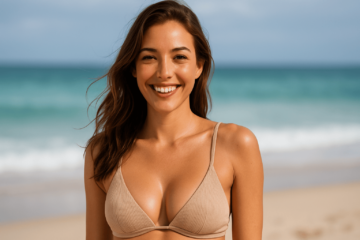 Breast augmentation is a highly personal decision and selecting the right implant size is an essential — and sometimes challenging — part of the surgical process. While factors like implant type and placement matter, size in particular plays a key role in how natural your results look, how you feel in your body, and how well your implants fit into your lifestyle.
Breast augmentation is a highly personal decision and selecting the right implant size is an essential — and sometimes challenging — part of the surgical process. While factors like implant type and placement matter, size in particular plays a key role in how natural your results look, how you feel in your body, and how well your implants fit into your lifestyle.
Board-certified Philadelphia plastic surgeon David Bottger, MD understands the importance of sizing when it comes to breast enhancement and rejuvenation. This guide is designed to help you understand what goes into choosing the best implant size for you — not based on trends, but based on what works for your unique goals and anatomy.
Envision Your Hopes for the Outcome
Many patients think in terms of cup sizes, such as going from a “B” to a “D” cup; however, aesthetic surgeons measure breast implants in cubic centimeters (ccs). The jump from one cup size to another typically requires around 150 to 200 ccs, depending on your body.
That said, cup sizes vary dramatically between bra manufacturers and your final cup size isn’t guaranteed. Dr. Bottger generally recommends focusing more on proportion, shape, and how you want to feel rather than a specific letter size.
The first and most important step to identifying the most ideal breast implant size is understanding what you’re hoping to achieve. Dr. Bottger advises asking yourself the following questions:
- Do I want a subtle enhancement or a noticeable change?
- Am I looking for more upper-pole fullness or a natural slope?
- How important is proportion and balance in relation to the rest of my body?
- What will make me feel the most confident — both in and out of clothing?
Bringing reference photos to your consultation can be helpful, but remember that no two bodies are exactly the same. What looks great on someone else may not translate directly to your own anatomy.
Anatomical Considerations
Choosing the best implant size isn’t just about preference — it also involves physical considerations. During a consultation for breast augmentation, the following anatomical factors will inform the most optimal implant size for your needs:
- Body Frame and Chest Width: Your natural chest wall and shoulder width help determine how wide an implant can be without looking unnatural. A petite frame may not support a large implant comfortably or safely, while a broader chest can accommodate a higher volume more proportionally.
- Breast Tissue and Skin Elasticity: The amount of existing breast tissue and the elasticity of your skin influence how much your body can comfortably accommodate. Overly large implants on a tight or thin-skinned chest can increase the risk of visible rippling or complications over time.
Lifestyle Considerations
Active individuals — especially those who regularly run, lift weights, or play sports — may prefer smaller, lighter implants for comfort and ease of movement. If you live a highly active lifestyle, this is worth discussing with your surgeon.
“Preview” Your Results with 3D Imaging
One of the most helpful tools during your consultation is 3D imaging, which can render a digital preview of how different implant sizes affect your silhouette. These tools allow you to “preview” different volumes and envision how each option can affect your body shape in clothing. You’ll be able to physically “try on” different implant sizes in person, but 3D imaging can give you greater insight into the potential outcomes.
This experience can shift your perspective. Many patients end up choosing a different size than they initially thought once they see the difference in person.
Contact Dr. Bottger at our Philadelphia office for more information on breast implants, or if you’re ready to schedule a consultation.